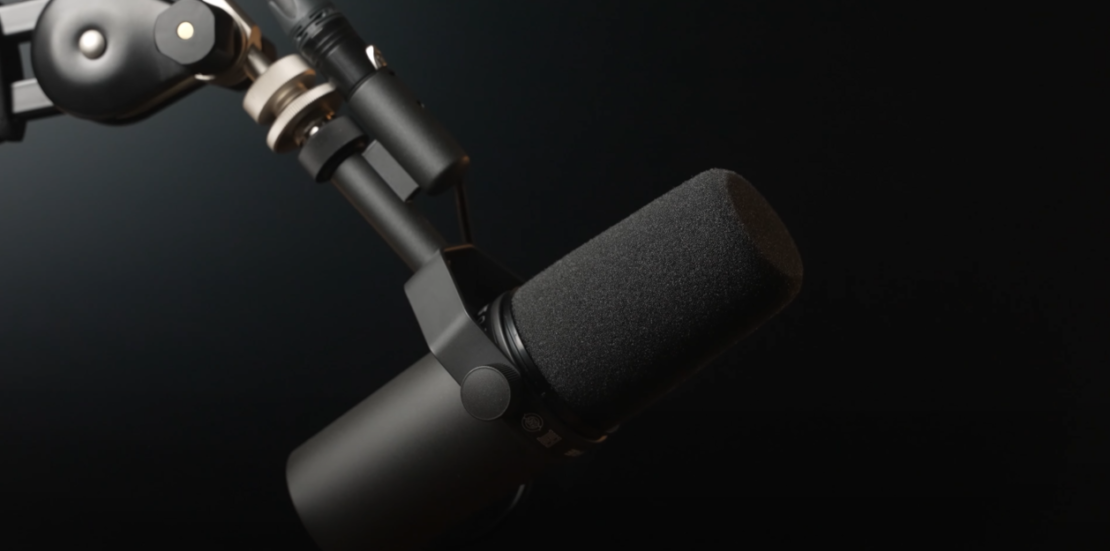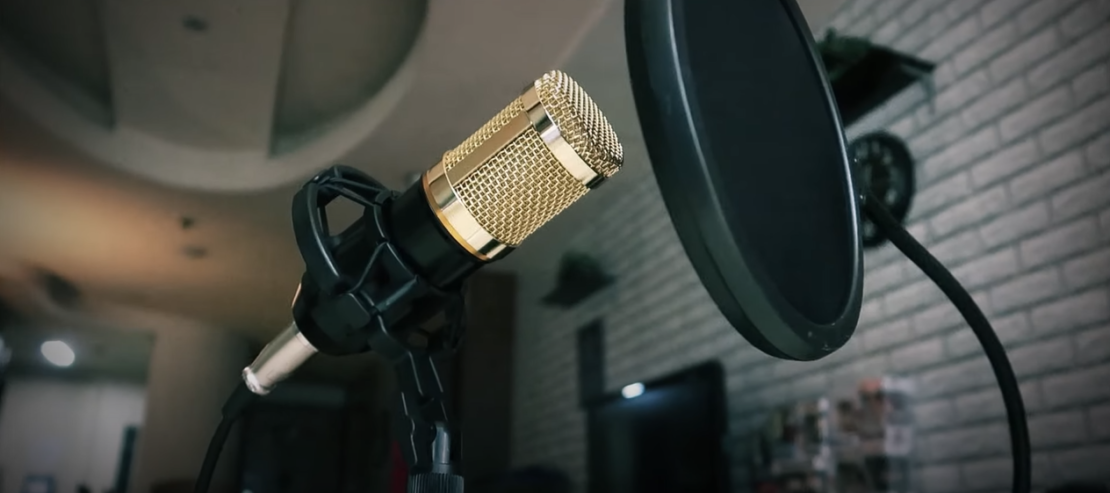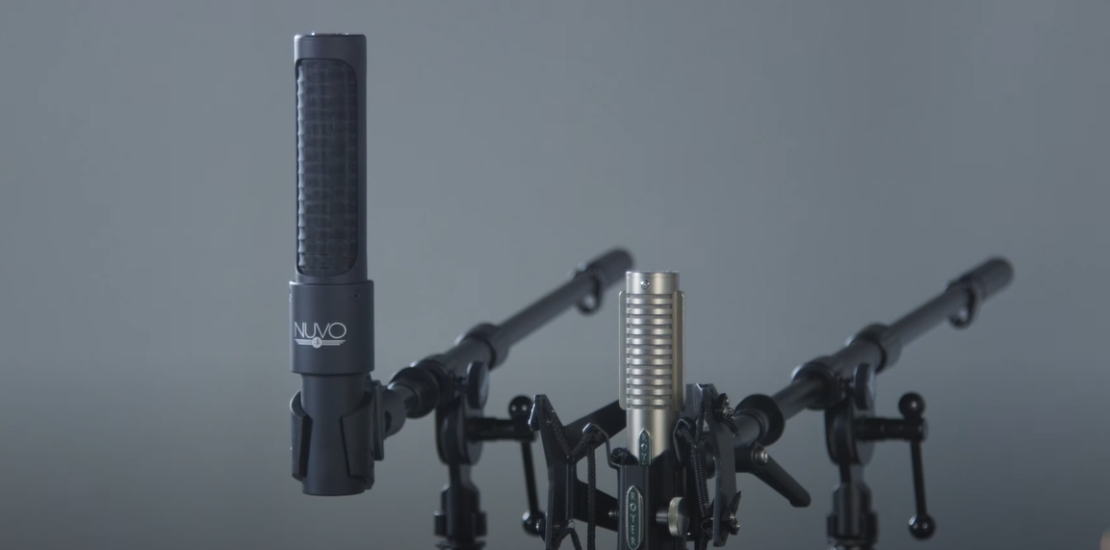Regardless of whether one is a novice or an experienced vocalist, possessing a comprehensive comprehension of the intricacies associated with vocal microphones is an essential aspect of the artistry. The significance of selecting an appropriate microphone extends beyond achieving accurate pitch. A suitable microphone has the potential to enhance one’s performance by providing the voice with the desired depth and resonance it merits.
Microphones exhibit a wide array of variations in terms of their physical forms, dimensions, and technological characteristics. In a general sense, these microphones can be classified into three distinct categories: Dynamic Microphones, Condenser Microphones, and Ribbon Microphones.
Dynamic Microphones

few tools hold as much significance as the dynamic microphone. Whether you find yourself capturing the explosive energy of a rock concert or engaged in the art of podcast recording, these versatile and durable pieces of audio equipment stand as the sound engineer’s ultimate resource.
The fundamental design of dynamic microphones can be described as simple, yet remarkably robust. At the heart of these microphones lie three key components: a diaphragm, a voice coil, and a magnet. Let’s delve into the intricate interplay of these elements, giving rise to the enchantment of sound:
- Diaphragm: This delicate material, typically composed of either plastic or lightweight metal, exhibits graceful movements upon encountering sound waves. It maintains a direct connection to the voice coil;
- Voice Coil: As the diaphragm vibrates, it sets the voice coil in motion. This coil is attached to the diaphragm and enveloped by a magnet, resulting in the generation of a magnetic field;
- Magnet: The varying magnetic field reacts to the voice coil’s movement, giving rise to an electrical signal that mirrors the initial sound waves.
In this way, the dynamic microphone transforms the energy from sound waves into an electrical signal that can then be amplified or recorded.
Strength in Simplicity
In the vast soundscape of audio recording equipment, dynamic microphones are renowned for several remarkable characteristics:
| Feature | Description |
|---|---|
| Durability | Their solid, uncomplicated construction makes dynamic microphones resilient to harshest conditions. They can handle anything from accidental drops to extreme temperatures. |
| High SPL Handling | Dynamic microphones can comfortably capture loud sources (e.g., guitar amplifiers or drum sets) without distortion, due to their capability to withstand high SPLs. |
| No Power Requirement | Dynamic microphones operate without the need for phantom power or batteries, simplifying their usage and enhancing their reliability. |
| Sound Quality | Primarily capturing mid-range frequencies, dynamic microphones offer a warm, intimate sound often favored by vocalists. |
Distinguished Nominees
The dynamic microphone’s market is brimming with diverse options. However, some models have gained special acclaim among audio professionals:
- Shure SM58: A legendary microphone, the Shure SM58 is lauded for its rich mid-range, built-in pop filter, and near-indestructible build;
- Audio-Technica ATM610A: With its hypercardioid polar pattern and multi-stage grille design, the ATM610A excels at isolating sound sources, making it ideal for loud stages;
- Sennheiser E835: Known for its frequency response designed for vocals, the E835 offers excellent feedback rejection and superior sound quality.
Applications of Dynamic Microphones
Dynamic microphones have numerous applications, thanks to their resilience and audio capabilities:
- Live Performances: Their ability to handle high SPLs and resist feedback make them excellent for use on stage;
- Studio Recording: Especially for recording loud instruments like drums and electric guitars, dynamic microphones provide sound fidelity without distortion;
- Broadcasting: Many radio stations and podcasts prefer dynamic microphones due to their warm, intimate sound capture;
- Field Reporting: Their robustness makes them perfect for on-the-spot reporting, regardless of environmental conditions.

Condenser Microphones
For an expert, novice, or audiophile venturing into this fascinating soundscape, the condenser microphone is an indispensable ally. Its exceptional sensitivity and wide frequency response are instrumental in capturing the most minute audio details, rendering it the go-to choice for studio recordings.
The fundamental operation of condenser microphones involves a capacitor, a component designed to store energy in an electrostatic field. Here’s a simple step-by-step breakdown of the transformation of sound waves into electrical signals:
- Sound Wave Capture: The microphone’s thin front plate (the diaphragm) vibrates when hit by sound waves;
- Vibration Conversion: The diaphragm’s vibrations change the distance between it and the backplate, altering the electrical capacitance;
- Amplification: The resulting voltage is amplified, creating an electrical signal that mirrors the original sound waves.
This process requires a power source, typically supplied as phantom power from an audio interface or mixer, to function.
Salient Features of Condenser Microphones
The unique capabilities of condenser microphones have set them apart in the audio industry:
- Sensitivity: Condenser microphones, with their lightweight diaphragms, can quickly respond to sound waves, enabling them to capture subtle nuances and details;
- Sound Quality: They deliver a wide frequency response, reproducing accurate and vibrant tonal qualities of voices or instruments;
- Power Requirement: Unlike dynamic microphones, condenser microphones require power, typically 48 volts, supplied via phantom power from an audio interface or mixer.
Top Picks
A multitude of condenser microphones graces the audio market, each with their unique attributes. However, a few models have earned special recognition:
| Microphone Model | Description |
|---|---|
| Audio-Technica AT2020 | This microphone has gained popularity for its outstanding performance-to-price ratio, offering a high-quality studio experience at an affordable cost. |
| Rode NT1 | Renowned for its ultra-low self-noise and warm tonal quality, the Rode NT1 is a favorite for capturing vocals and acoustic instruments. |
| Neumann U87 | An industry classic, the Neumann U87 is beloved by professionals for its detailed sound capture and multiple directional patterns. |
Condenser Microphones in Action
Condenser microphones, with their sensitivity and wide frequency response, are suitable for various applications:
- Studio Recording: Renowned for their ability to capture the subtle nuances of vocals and instruments, these microphones have become a staple in recording studios;
- Broadcasting: Radio stations and podcasters frequently opt for condenser microphones because of their exceptional ability to reproduce accurate and precise sound;
- Voice-over and Dubbing: The ability to capture vocal nuances renders them ideal for voice-over and dubbing tasks;
- Field Recording: When it comes to capturing ambient sounds and intricate audio landscapes, condenser microphones are often the preferred tool.
Ribbon Microphones

Revered for their warm, vintage tone, these microphones add a touch of antiquity and charm to modern-day recording scenarios. With their unique mechanism of sound conversion, they capture high-frequency details without the harshness that could characterize other microphone types.
Working Principle of Ribbon Microphones
Ribbon microphones, often referred to as velocity microphones, boast a distinctive construction featuring a delicate metal strip, typically made of aluminum, suspended between the magnetic poles. The captivating process of sound transformation unfurls as follows:
- Sound Wave Capture: As sound waves strike the ribbon, it vibrates;
- Vibration to Voltage: The ribbon’s movement within the magnetic field induces a voltage, which mirrors the original sound waves;
- Amplification: This voltage is then amplified, producing an electrical signal corresponding to the captured sound.
It’s worth noting that this ribbon, being extremely light and delicate, contributes significantly to the microphone’s sensitivity and distinct sound quality.
Features of Ribbon Microphones
The allure of ribbon microphones lies not just in their distinctive tonal qualities, but also in their unique traits:
- Vintage Tone: Ribbon microphones are prized for their warm, vintage tone that brings a rich, nostalgic feel to recordings;
- Sound Quality: They excel at capturing high-frequency detail without the harshness, rendering a smooth, natural sound that is particularly flattering on vocals and acoustic instruments;
- Care: Ribbon microphones are quite delicate and require careful handling to avoid damage to the thin ribbon element;
- Bidirectional Pattern: A typical feature of ribbon microphones is their figure-8 or bidirectional polar pattern, capturing sound equally from the front and back while rejecting sound from the sides.
Iconic Ribbon Microphones in the Market
In the pantheon of ribbon microphones, several models have earned iconic status for their outstanding performance and enduring quality:
| Microphone Model | Description |
|---|---|
| Royer R-121 | This modern classic is loved for its ability to handle high sound pressure levels, providing the warmth of vintage ribbon mics without their fragility. |
| AEA R44C | A reproduction of the legendary RCA 44BX, the AEA R44C is known for its rich, full sound, often described as the quintessential ribbon microphone tone. |
| Coles 4038 | Originally designed for broadcasting, the Coles 4038 is prized for its exceptionally smooth frequency response and is a favorite for drum overhead and room mic applications. |
Applications and Care
With their unique sonic qualities, ribbon microphones find their niche in a range of applications:
- Studio Recording: Their warm, detailed sound makes them a popular choice for recording vocals and acoustic instruments;
- Broadcasting: The natural, smooth sound reproduction of ribbon microphones is favored in radio and podcasting studios;
- Orchestral Recording: Their bidirectional pattern and gentle high-frequency response are perfect for capturing the rich complexity of orchestral ensembles.
Given their delicate nature, ribbon microphones require careful handling:
- Avoid Wind: Sudden gusts of wind or close vocal pops can damage the ribbon, so using a pop filter and avoiding high-wind environments is recommended;
- Handle with Care: Physical shock can harm the ribbon element. Always handle and store ribbon microphones with the utmost care;
- Mind the Phantom Power: While many modern ribbon microphones are protected against it, phantom power can potentially damage vintage and unprotected ribbon mics.
Polar Patterns: The Direction of Sound Capture
Understanding the polar patterns of microphones – the areas where they are most sensitive to sound – can dramatically impact vocal recording. Here are the three primary polar patterns:
Cardioid
The cardioid pattern, derived from the Greek word ‘kardia’, meaning heart, is the shape adopted by microphones to pick up sound in a heart-like pattern. This concept plays an instrumental role in the realm of sound technology, particularly for vocal microphones. Shaped like an apple or a heart, the polar pattern of a cardioid microphone is engineered to capture sound from the front while rejecting it from the sides and the rear.
This directional sensitivity has led cardioid microphones to become the most widely used microphones for a variety of applications – from public speaking, recording studios, broadcasting to live music performances. With a purpose to primarily capture sound from one direction and diminish the rest, cardioid microphones are often the first choice for those seeking a focused, clear, and isolated audio output.
The Cardioid Pattern: A Closer Look
Let’s dive into the specifics to understand why this pattern has such a profound impact on sound technology. The diagram below illustrates the fundamental cardioid pattern.

In a cardioid microphone:
- Maximum sensitivity is towards the front (0 degrees);
- Moderate sensitivity towards the sides (~90 and ~270 degrees);
- Least sensitivity towards the rear (180 degrees).
This unique polar pattern ensures that the primary source of sound in front of the microphone is picked up while minimizing extraneous noise from other directions.
Exceptional Features of the Cardioid Pattern
A deeper exploration of the cardioid pattern reveals an array of impressive features that go beyond just ‘sound pick up’. Here are a few highlights:
| Feature | Description |
|---|---|
| Superior Isolation | Cardioid microphones demonstrate exceptional ability in isolating the sound source. They effectively reject off-axis sounds, meaning sounds coming from the sides and rear of the microphone. This feature makes them highly suitable for environments with high ambient noise levels. |
| Reduced Feedback | Cardioid microphones help minimize feedback issues. Feedback occurs when sound from a speaker re-enters the microphone and gets amplified again, resulting in a ringing or howling sound. Due to their reduced sensitivity to sounds from the sides and rear, cardioid microphones decrease the chances of feedback occurring. |
| Flexibility in Placement | Cardioid microphones offer flexibility in placement relative to the sound source. As long as the sound source is within the microphone’s front hemisphere, the microphone can effectively capture the sound. This versatility makes them suitable for various recording or live sound setups. |
| Rich and Warm Tone | The focus of the cardioid pattern on the sound directly in front of the microphone results in a rich and warm tone. This characteristic makes cardioid microphones particularly well-suited for capturing vocal performances, as it enhances the overall sound quality and ensures a clear representation of the singer’s voice. |
Cardioid Microphones in Action
When it comes to practical applications, cardioid microphones shine in multiple scenarios.
- Live Performances: In a live setting, the cardioid’s ability to reject off-axis sound is crucial. Musicians can perform without worrying about ambient noise or feedback. Solo performances especially benefit from the cardioid’s focused pickup pattern, making the performance sound clear and intimate;
- Studio Recording: In the studio, the cardioid microphone is an essential tool. It helps to isolate the vocalist of the instrument being recorded, reducing the bleed from other instruments. This results in a clean recording that provides more control during the mixing process;
- Broadcast and Podcast: In broadcasting and podcast scenarios, where it’s crucial to capture the speaker’s voice with clarity and detail, the cardioid microphone excels. It provides a focused pickup, reducing the impact of room noise and delivering a clear, natural sound;
- Public Speaking: For applications like public speaking or conferencing, the cardioid microphone’s ability to focus on a single sound source while reducing background noise is invaluable. It ensures the message is clear, with no unnecessary noise distractions.
Omnidirectional
When we think about the essence of sound and its immersive nature, the concept of ‘omnidirectionality’ often comes to mind. Hailing from the Latin words ‘omni’ meaning ‘all’ and ‘directus’ implying ‘straight’, omnidirectional translates to ‘all directions’. This concept becomes truly fascinating when applied to the world of microphones.
Omnidirectional: Unfurling the Concept
An omnidirectional microphone, as the name suggests, captures sound equally from all directions. Whether the sound originates from the front, back, top, bottom, or sides of the microphone, it’s all recorded with equal gain, creating a 360-degree field of sound pick-up.
This comprehensive capture is depicted in the following polar pattern:

The key aspect of an omnidirectional microphone is:
- Equal sensitivity to sound from all directions (0 to 360 degrees).
This unparalleled sound capturing capability makes omnidirectional microphones a go-to choice for many audio situations.
The Versatile Virtues of Omnidirectional Microphones
What makes omnidirectional microphones so special? Let’s examine their characteristic features:
- 360-degree Sound Capture: Omnidirectional microphones are adept at capturing sound from all around, making them ideal for recording environments where sound sources are scattered or where capturing the ambiance is important;
- Consistent Frequency Response: They offer an excellent and consistent frequency response at all angles. This means the sound quality will not change even if the source of sound moves around the microphone;
- No Proximity Effect: Unlike directional microphones, omnidirectional microphones do not have a proximity effect — a phenomenon that results in increased bass or lower frequency response when a sound source is close to the microphone. This characteristic ensures a more natural sound recording;
- Less Wind Noise: These microphones are less susceptible to wind noise and plosive sounds (like ‘p’ or ‘b’ sounds that make a strong air puff), making them suitable for outdoor recordings.
Omnidirectional Microphones in Action
The versatility of omnidirectional microphones extends to a myriad of applications. Let’s delve into some of these scenarios:
| Application | Description |
|---|---|
| Group Recordings | When recording a group of singers, an orchestra, or a choir, an omnidirectional microphone captures the sound of every performer equally, regardless of their position around the microphone. This ensures a balanced representation of the entire group’s performance. |
| Ambient Sound Capture | Omnidirectional microphones excel in capturing the atmosphere of a location. Whether it’s the echoing grandeur of a cathedral, the soft rustle of a forest, or the bustling energy of a cityscape, these microphones faithfully record the environment’s unique acoustic character. |
| Conference Rooms | In situations where multiple speakers are positioned around a table, such as in a meeting or conference, omnidirectional microphones effectively capture every participant’s voice. This enables clear and consistent audio recording, ensuring that all voices are picked up without the need for each individual to be precisely positioned relative to the microphone. |
| Field Recording and Interviews | For journalists or documentary makers, the 360-degree sound capturing capability of omnidirectional microphones is beneficial for recording interviews and capturing the surrounding atmosphere. The omnidirectional pattern allows for more natural and immersive recordings, providing listeners with a sense of being present in the recorded environment. |
| Theatrical Applications | In theater, omnidirectional lavalier microphones can be attached to an actor’s body, allowing free movement while maintaining consistent audio capture. This flexibility is crucial for delivering clear and uninterrupted sound during live performances, ensuring that the actor’s voice is captured accurately regardless of their movements on stage. |
Choosing Between Omnidirectional and Other Patterns
While omnidirectional microphones hold a crucial place in sound recording, their usage depends on the situation. Here is a quick comparison with their counterparts:
- Omnidirectional vs Cardioid: While the omnidirectional microphone captures sound from all directions, the cardioid focuses on sound from the front and reduces noise from the sides and rear. So, for isolating a single source or reducing ambient noise, a cardioid pattern might be preferred. For capturing a group or ambient sound, an omnidirectional pattern is ideal;
- Omnidirectional vs Bidirectional (Figure-8): A bidirectional microphone picks up sound from the front and back but rejects it from the sides. For situations requiring two-way sound capture (like a face-to-face interview), a bidirectional microphone could be a better fit. However, for capturing sound from all directions, the omnidirectional pattern reigns supreme.
Conclusion
The relationship between a singer and their microphone is more of a partnership. It’s about understanding the character of your voice and pairing it with a microphone that will do it justice. Take time to experiment, test out different types, and remember – it’s about what sounds best to your ears.
In the end, understanding vocal microphones is not just about technical specifications or the price tag; it’s about enhancing your creative expression and connecting with your audience on a deeper level. It’s a sonic journey that every singer must undertake to truly hit the high notes of their singing career.
FAQ
The environment significantly influences the microphone choice. Dynamic microphones are often preferred for live settings due to their robustness and ability to minimize background noise. Conversely, condenser or ribbon microphones, which capture more vocal nuances, are used in controlled studio environments.
1. How does the environment affect the choice of microphone?
The environment significantly influences the microphone choice. Dynamic microphones are often preferred for live settings due to their robustness and ability to minimize background noise. Conversely, condenser or ribbon microphones, which capture more vocal nuances, are used in controlled studio environments.
2. What does the frequency response of a microphone imply?
The frequency response indicates the range of frequencies a microphone can pick up. A microphone with a wide frequency response can capture more of the high and low ends of the frequency spectrum, often preferred for recording vocals.
3. Is a more expensive microphone always a better choice?
Not necessarily. The choice of microphone should depend more on its suitability for the voice type, performance context, and specific sound you’re aiming to achieve.
4. How important is the role of polar patterns?
Polar patterns determine how much of the surrounding sound the microphone picks up. Choosing the right polar pattern can influence the sound quality, especially in a live setting or when recording multiple vocalists simultaneously.